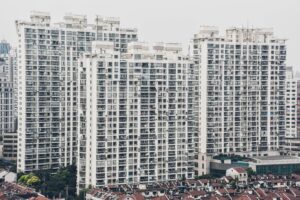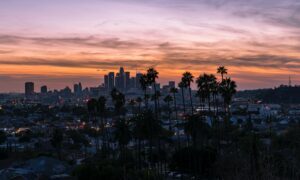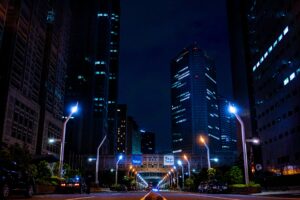Between 1991 and 2017, India has seen enormous economic growth. India’s growth, credited to strategic economic reforms since 1991 according to an IMF working paper, has...
The cities of tomorrow are built on data
3 mins read
If you live in a city, chances are, you are quite familiar with these scenarios: it takes you 40 minutes to travel five kilometres, you stand in long queues to simply get cash out of an ATM and the only way you can effectively follow social distancing is by locking yourself indoors because there is no way you can keep six feet distance from people out on the streets. In this blog, Tata Communications' Praveen Arora, Vice President - Internet of Things (Business Unit), explains why these are only some of the unique challenges of mass urbanisation; or, everyday life as you know it.
 In 2018,
United Nations recorded that 55% of the world’s population is living in urban areas, and this is expected to increase to 68% by 2050. India already has
34% of its population occupying urban areas. And every year, this percentage increases. However, a looming question remains -
how will these urban cities effectively support basic needs of this ever-growing population while also ensuring sustainable opportunities, growth, and resources for everyone , and more so today, in terms of ensuring safety during this pandemic.
In 2018,
United Nations recorded that 55% of the world’s population is living in urban areas, and this is expected to increase to 68% by 2050. India already has
34% of its population occupying urban areas. And every year, this percentage increases. However, a looming question remains -
how will these urban cities effectively support basic needs of this ever-growing population while also ensuring sustainable opportunities, growth, and resources for everyone , and more so today, in terms of ensuring safety during this pandemic.
This is where predictive analytics play a crucial role - helping cities improve mobility, infrastructure and resource management in a cost-effective manner. Identify the patterns and then break them Predictive analytics can unlock hidden patterns. Imagine if we could forecast how traffic on a street is impacted due to monsoon or how rescheduling the sequence of traffic signals by few seconds can reduce the number of cars, resulting in less pollution. Multiple simple and effective solutions can be identified through analytics."With the increasing number of Internet of Things (IoT) sensors and devices deployed across urban areas, the solution could very well lie within the data gathered from these cities. If analysed regularly and accurately, data could offer insights on your city’s strengths and pain points to facilitate informed decision making that can help create an equitable lifestyle."
"During these times, we have seen few countries who have been able to track and fight the pandemic by conducting timely analysis of data generated through IoT devices in real-time. They have successfully leveraged data science to develop a monitoring system to identify and assess every citizen’s travel history and the level of exposure to the virus."
 Several other cities have also explored the potential of predictive analytics to bring positive changes for its citizens. Los Angeles is using data to maintain clean streets, water management, assess and enhance diversity in police recruits, increase participation in sports and many other such initiatives. Barcelona has installed smart irrigation systems across parks and gardens to gauge humidity levels underground and effectively assess water requirements.
This exercise resulted in saving 600,000 litres of water annually. These are just two of the many cities deploying intelligent, data-driven solutions to address everyday challenges, thereby benefiting the environment, people and ultimately, economy.
A safer, sustainable society India is taking note of these best practices across geographies and making its way to exploring the wonders of analytics. The Government of India’s Smart Cities Mission has received further allocation of INR 6450 crore this fiscal and the addition of five new cities to the list of existing 100 smart cities. Predictive analytics will be the foundation for the success of smart cities by addressing critical areas such as public safety, upgraded mobility and more.
Several other cities have also explored the potential of predictive analytics to bring positive changes for its citizens. Los Angeles is using data to maintain clean streets, water management, assess and enhance diversity in police recruits, increase participation in sports and many other such initiatives. Barcelona has installed smart irrigation systems across parks and gardens to gauge humidity levels underground and effectively assess water requirements.
This exercise resulted in saving 600,000 litres of water annually. These are just two of the many cities deploying intelligent, data-driven solutions to address everyday challenges, thereby benefiting the environment, people and ultimately, economy.
A safer, sustainable society India is taking note of these best practices across geographies and making its way to exploring the wonders of analytics. The Government of India’s Smart Cities Mission has received further allocation of INR 6450 crore this fiscal and the addition of five new cities to the list of existing 100 smart cities. Predictive analytics will be the foundation for the success of smart cities by addressing critical areas such as public safety, upgraded mobility and more.
- Public safety
- Employee or worker safety
- Upgraded mobility
- Effective waste management
- Sustainability and growth
The data can aid owners of the premises and authorities to strategies the workforce, usage of electricity and the success ratio of this initiative. As"A simple insight based on usage data and seasonal patterns can suggest best mode of energy optimisation from a renewable source or a simple control of smart street lights or building lighting control based on movement can significantly reduce carbon footprints. For instance with discussions around malls, shops and eateries to be open for 24/7 in Mumbai, here predictive analytics can monitor the number of footfalls."
 the smart city projects make their journey from innovation to regulation, there are many hurdles we are yet to overcome. India has reached the experimentation stage, where both government and businesses have started to leverage advanced technologies. While there is no end to the data generated by cities, gathering, storing and analysing data requires robust infrastructure and experienced human capital. Yet, we must start… and start now. For a country to achieve equitable resource distribution is the first but crucial step to paving way for the right social and economic opportunities.
Discover more about how IoT lays the foundations for the buildings of the future.
the smart city projects make their journey from innovation to regulation, there are many hurdles we are yet to overcome. India has reached the experimentation stage, where both government and businesses have started to leverage advanced technologies. While there is no end to the data generated by cities, gathering, storing and analysing data requires robust infrastructure and experienced human capital. Yet, we must start… and start now. For a country to achieve equitable resource distribution is the first but crucial step to paving way for the right social and economic opportunities.
Discover more about how IoT lays the foundations for the buildings of the future.
Leaders In Our Own Right
Explore related solution
Today, 55% of the world’s population lives in urban areas, with that proportion expected to increase to 66% by 2050. Projections show that urbanisation combined with the...
"…the real purpose of government is to enhance the lives of people..." — Gerald R. Ford (US President 1974-77) In the bustle of crowded streets in cities the world over,...
What’s next?
Explore Our Solutions
Explore our solutions through immersive platform demos or engage with our surveys and pricing calculators
Explore Our Solutions
Explore our solutions through immersive platform demos or engage with our surveys and pricing calculators
Explore Our Solutions
Explore our solutions through immersive platform demos or engage with our surveys and pricing calculators


.png?width=310&height=159&name=image%20(1).png)